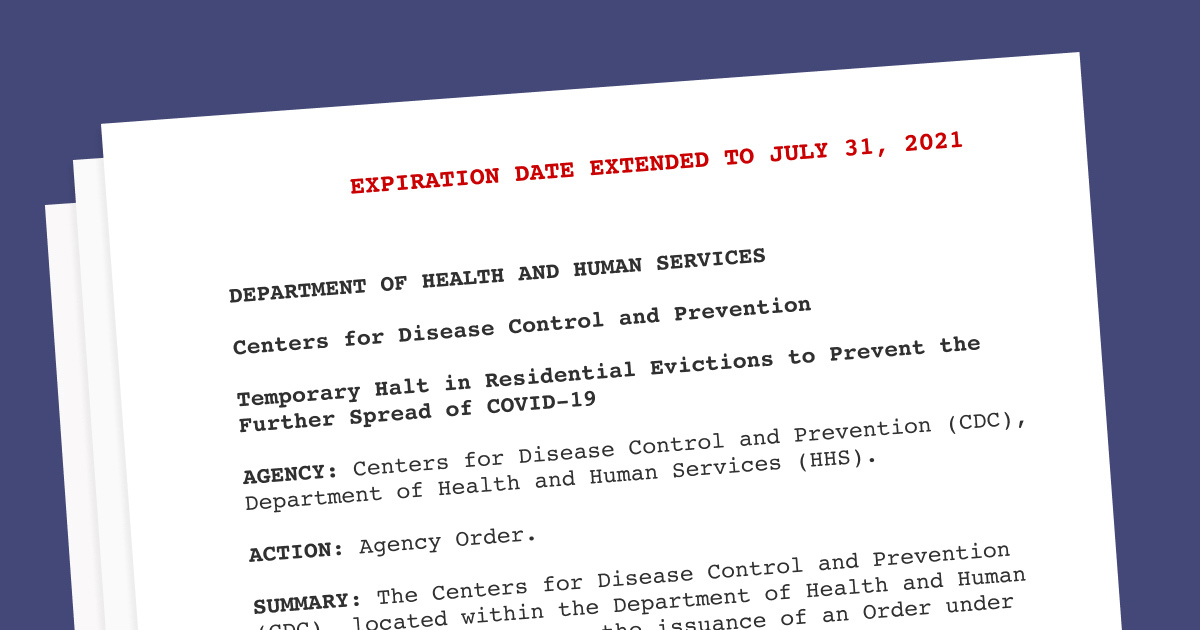
The Eviction Lab last provided an overview about the CDC order in September 2020. The CDC order went into effect on September 4th, 2020, and originally was set to expire on December 31st, 2020. The CDC moratorium has been extended four times, once by Congress to January 31st, 2021, and again by the CDC to March 31st, 2021, then June 30, and most recently until July 31, 2021.
To be protected from eviction, renters must complete this declaration and provide it to their landlord or property manager. Each adult listed on the lease, rental agreement, or housing contract should complete the declaration.
Get the Tenant Declaration Form (PDF)
Renters must meet certain requirements to be protected from eviction, which are listed on the declaration form.
But this declaration only prevents evictions where the tenant is behind on rent. The order includes multiple exceptions where eviction is permitted.
Local housing courts have interpreted the CDC order differently across the country. In October, the CDC issued nonbinding guidance that landlords could file to evict tenants, as long as other stages of the eviction process, for example issuing a writ of eviction at the end of the case, are halted.
As a result, since September we have seen that various courts are implementing the CDC order differently:
Preventing the final execution of an eviction order is important. However, allowing the full eviction court process to play out during the eviction moratorium will cause avoidable harm to tenants. Many tenants may move out before the eviction case concludes, even if they would qualify for protection under the eviction moratorium. Data from before the pandemic show that many tenants leave without the case going to court, perhaps aware that the vast majority of cases end with decisions in the landlord’s favor. At the same time, just the presence of a filing on a tenant’s record can prevent that tenant from accessing safe and healthy rental housing in the future.
Allowing the full case to play out during the moratorium does not benefit landlords, either. The landlord is not able to rent out the unit to a new tenant during the moratorium, and an eviction judgment could prevent tenants and landlords from accessing financial assistance that could address or clear the tenant’s debt, like rental assistance grants.
Despite the fact that this moratorium is federal law and applies to all parts of the country that do not have more comprehensive eviction moratoria in place already, not all renters are equally protected from the harms of eviction filings and eviction.
The Eviction Lab will continue to update our COVID-19 Housing Policy Scorecard, which tracks statewide housing policies, and COVID-19 Policies Table, which includes information about local orders, to keep renters informed about what policies exist in their states in addition to the CDC moratorium. The National Low Income Housing Coalition and National Housing Law Project will also continue to provide updates on housing amidst the pandemic.
The Eviction Lab will also continue to update and expand the Eviction Tracking System, allowing us to monitor the impact of the new federal moratorium, as well as state and local protections, and observe filings after its expiration.